Keeping Mr. Lincoln Play Guide
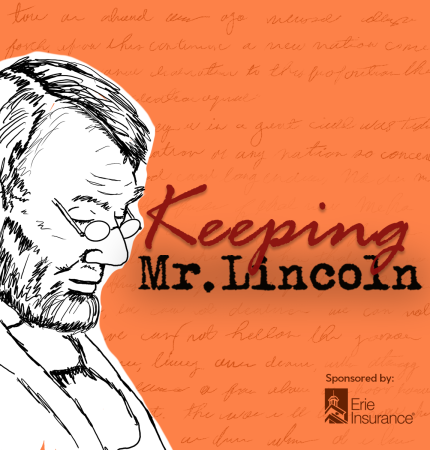
What to know – before the show!
[bs_collapse id=”collapse_f934-ed85″]
[bs_citem title=”Play Synopsis” id=”citem_9945-d600″ parent=”collapse_f934-ed85″]
Keeping Mr. Lincoln is a retelling of President Abraham Lincoln’s life through the words of both himself and the people that knew him.
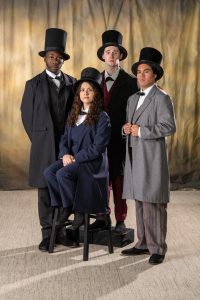
The show starts with Lincoln’s law partner, William Herndon, walking the audience through Lincoln’s childhood. A large emphasis is placed on telling the impartial truth about the legendary figure and not just piling on lavish praise that might mislead the audience from the truth. We watch as Lincoln is born and grows up with a burning curiosity for the world, especially when it comes to reading and writing. He constantly reads and asks questions of anyone he can, no matter how important that person might be.
Herndon moves on to talk about how as Lincoln grew up, he becomes well-liked and well respected by those around him, and surprises people with his intelligence. At the age of 25, Lincoln begins his political career by running for a seat in the Illinois House of Representatives. He moves to Springfield, marries Mary Todd Lincoln, and begins to wrestle with the issue of slavery in the realm of politics. This leads Herndon to tell us about Lincoln’s time as President.
Through the eyes of President Lincoln, Mrs. Lincoln, and Herndon, the show explores Lincoln’s struggles with being President during the Civil War. Through a variety of different stories and accounts, we gain a better understanding of him, and gain a new perspective of what it must’ve been like to lead a country at such a dark part of its history. The show ends as we learn about the President’s assassination, and we take a final overarching look at one of the most famous men to hold the office of President of the United States.
[/bs_citem]
[bs_citem title=”Play Before the Play” id=”citem_6309-d670″ parent=”collapse_f934-ed85″]
CROSS THE LINE
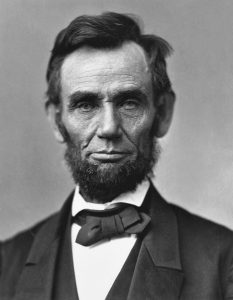
Abraham Lincoln was the 16th president of the United States, but to get to the office of President, the citizens of America had to vote. So, take a poll! Designate two separate sides of the classroom. This can be done with a line of tape or other wise. Ask the following questions (and any of your own) to poll your students about their knowledge of voting and political policies. After each statement ask questions about the statement (ex- Cross the line if you know the name of any US president. Which names do you know?) Have everyone reset to one side after each one.
Cross the line if….
- You have gone with a parent to go vote
- You know who the president of the United States is
- You know any names of any US president
- You have seen a politician of TV
- You know your state capital
KAS: 4.C.RR.1; 5.C.KGO.1
LEAD ON
What makes a good leader? A leader is someone who is in charge; someone who helps others. Ask your class what they think makes a good leader. Make a running list on the board. Have students get into pairs. Student number one is the “sculptor.” Student number two is the “clay.” Have the sculptor form the clay into a pose that they think looks like a leader by having them show how to stand. Person number two then becomes a frozen statue in the pose. Lead the sculptors around to look at their statues. Allow sculptors to describe their piece and what makes them a leader. Have pairs switch who is who!
KAS: TH:Pr6.1.4; TH:Cr1.1.4.c
CLASSROOM LEGISLATION
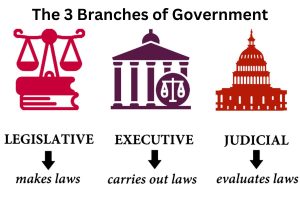
As President of the United States, Abraham Lincoln oversaw the people of the country. As a member of the executive branch of government, the President has the ability (and civil responsibility) to help shape the legislation and laws of the nation. The process that bills must go through to become a law is a lengthy one, and it starts long before reaching the desk of the President. Explain to your students that they will get a chance to write a mock bill of their own that they will try to have passed into law in their classroom for a day. Students should work in small groups, the “Committee,” to write out an idea that they think should be enforced in their classroom. Maybe they want a day of no homework or for everyone to be able to wear pajamas to class on a Friday. Have each group write up their bill and present it to another group in the class who will act as the “House of Representatives.” Allow those students to debate the bill then vote. If the majority of the House votes in favor of the bill, it will then move to the “Senate” which should be all of the students in the class. Again, allow the class time to discuss the pros and cons of the proposed bill before voting. If the majority of the class votes to continue passing the bill, it will come to you, the teacher, acting as the “President.” You will get to review the bill and either veto it or sign it into law for a day of your choosing.
During the process, encourage each group to truly think about the bill they are writing. Is their idea something that benefits the class in a positive way? Does their idea require a lot of extra resources? Can they achieve their idea in a day? Also encourage students to think carefully about the bills their classmates are wanting to pass before they cast their votes. If a bill ends up being voted against, have students reflect on what they could do to make their ideas stronger or more appealing to their fellow classmates and teacher.
KAS: 3.C.RR.1; 3.C.PR.1; 4.C.PR.1; 4.C.KGO.1
[/bs_citem]
[bs_citem title=”Contextual Article” id=”citem_1c35-b322″ parent=”collapse_f934-ed85″]
IN THE WORDS OF LINCOLN
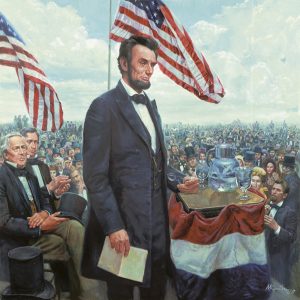
Arguably Lincoln’s most famous speech, as well as one of America’s most iconic, the Gettysburg Address was delivered on November 19th, 1863. The President had been asked by David Wills, the man tasked with cleaning up the aftermath of the Battle of Gettysburg, to deliver a speech at the dedication of the Gettysburg Civil War Cemetery. The battle had been one of the most brutal in the entire Civil War, with an estimated 51,000 Union and Confederate casualties- men either killed, injured, or simply missing- combined. History knows it as a turning point in the war, but at the time, it was merely one of the bloodiest events of an already bloody war.
Lincoln’s famous speech, surprisingly, was not even the main event of this dedication. Edward Everett, a renowned orator of the time and a former dean at Harvard University, was chosen to be the keynote speaker. While Lincoln delivered his timeless message in just about two minutes, Everett spoke for nearly two hours prior. In a letter that Everett wrote to the President afterwards, he said, “I wish that I could flatter myself that I had come as near to the central idea of the occasion in two hours as you did in two minutes.”
In just a couple of minutes, Lincoln was able to eloquently express the significance of the Union’s cause and the sacrifices made by the soldiers that fought in the Civil War. He called for the preservation of the ideals that the United States had been founded on; liberty, equality, and freedom. He honored the fallen and urged the people to keep fighting for the cause that they had fallen for, so “that these dead shall not have died in vain.”
It seems ironic that Lincoln said, “The world will little note, nor long remember what we say here, but it can never forget what they did here.” The United States has indeed not forgotten his words, having etched them into the walls of the Lincoln Memorial in Washington D.C., and revering it as one of the great American speeches.
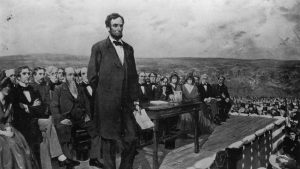
The Gettysburg Address:
“Fourscore and seven years ago our fathers brought forth, on this continent, a new nation, conceived in liberty, and dedicated to the proposition that all men are created equal. Now we are engaged in a great civil war, testing whether that nation, or any nation so conceived, and so dedicated, can long endure. We are met on a great battle-field of that war. We have come to dedicate a portion of that field, as a final resting-place for those who here gave their lives, that that nation might live.
It is altogether fitting and proper that we should do this.
But, in a larger sense, we cannot dedicate, we cannot consecrate—we cannot hallow—this ground. The brave men, living and dead, who struggled here, have consecrated it far above our poor power to add or detract.
The world will little note, nor long remember what we say here, but it can never forget what they did here.
It is for us the living, rather, to be dedicated here to the unfinished work which they who fought here have thus far so nobly advanced. It is rather for us to be here dedicated to the great task remaining before us—that from these honored dead we take increased devotion to that cause for which they here gave the last full measure of devotion—that we here highly resolve that these dead shall not have died in vain—that this nation, under God, shall have a new birth of freedom, and that government of the people, by the people, for the people, shall not perish from the earth.”
[/bs_citem]
How to grow – after the show!
[bs_citem title=”Extend the Experience” id=”citem_8c33-5122″ parent=”collapse_f934-ed85″]
POETRY OF THE SELF
There was more to Abraham Lincoln than just being President. His life began long before the White House. He had relationships and friendships. Explain to your class that, just like Lincoln, they have many aspects to their lives aside from being students. Then have your students create a bio-poem about themselves. A bio-poem is a form of poetry that paints an overall picture of an individual’s history, personality, and more. Each line of the poem is determined by the prompts below:
- Your first name
- Three adjectives that describe you.
- Important Relationships (daughter of, mother of, etc.)
- Two or three things, people, or ideas that you love.
- Three fears you have experienced.
- Accomplishments
- Two or three things you want to see happen or want to experience.
- Where you live.
- Your last name
Here’s an example bio-poem about Abraham Lincoln:
Abraham
Honest, curious, wise
Husband of Mary Todd, Father of Robert, Willie, and Tad
Who loved equality, unity, and the pursuit of knowledge
Who feared a divided nation, feared that slavery might continue in the United States, and feared that freedom would become at risk
Who led the nation during the Civil War so that the horrors of slavery would end
Who wanted to see a world where all people could come together in unison and where knowledge could be pursued
Born in Kentucky, lived in Illinois and Washington D.C.
Lincoln
Have students write a bio-poem about themselves using the prompts. Encourage students to consider their most important traits, relationships, and other details to include in their poem. Remind the class that poetry comes in all forms and doesn’t always have to rhyme. Once students are done writing, have them share their poems with the class and discuss any similarities or differences in their poems.
Extend the experience: Once students grow more comfortable writing bio-poems, have them choose other important historical figures to write bio-poems for. Encourage students to learn more about individuals beyond their greatest achievements.
KAS: C.4.1.a; TH:Re8.1.3.a
DIGGING DEEPER
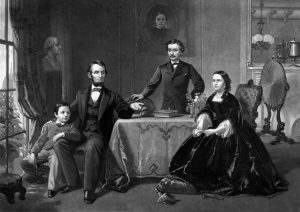
While Abraham Lincoln was an important figure in U.S. history, his relationships and connections with others influenced his decisions and shaped the man he was. Have your students choose one of the figures below to learn more about:
- Thomas Lincoln (1778-1851): An American farmer, carpenter, and father of Abraham Lincoln
- William Herndon (1818-1891): Lincoln’s law partner, mayor of Springfield, Illinois, and author of Herndon’s Lincoln: The True Story of a Great Life
- Mary Todd Lincoln (1818-1882): The wife of Abraham Lincoln and First Lady of the United States during his presidency.
- Ulysses S. Grant (1822-1885): Commanding General of the Union army during the Civil War and 18th President of the United States
- John Wilkes Booth (1838-1865): An American stage actor most known for the assassination of President Abraham Lincoln
Encourage students to consider the following details as they conduct their research:
- Relationship with Abraham Lincoln
- Role in the Civil War (if applicable)
- Notable achievements
Have your students create a presentation to share their findings with the class.
KAS: C.4.5; W.4.7; SL.5.4
CAMPAIGN TRAIL

The way candidates campaign for President has changed since Abraham Lincoln’s presidency in the mid-1800’s. Begin by having your students use their imagination to create a modern campaign poster for Abraham Lincoln. It can be as simple or complex as desired and should include slogans or address a specific issue from Abraham Lincoln’s own platform. After the students have created their posters, have students write a simple speech to give to convince voters to cast their ballots for Abraham Lincoln. Then share the posters and speeches with the rest of the class. Do any of the speeches elicit an emotional response? Do the posters catch your eye and make you feel more positively or negatively about the candidate?
Extend the experience: Discuss with students the importance of campaigning, especially campaigning fairly. It is common in modern times for election campaigns to be rife with lots of negativity hurled toward the competition on all sides. Chat with your students about the things that are most important for voters to know and see in election candidates. What makes a good leader? What sorts of traits do they believe make someone honorable and worth voting for?
KAS: VA:Cr2.3.8; VA: Pr6.1.8; TH:Cr3.1.3.b; C.4.1.b
[/bs_citem]
[bs_citem title=”Suggested Reading” id=”citem_eab0-1161″ parent=”collapse_f934-ed85″]
If you like learning about American history, you may also like…
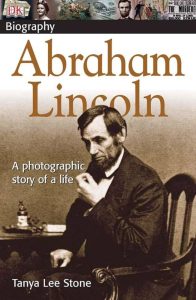
Abraham Lincoln by Tanya Lee Stone
Abraham Lincoln, sixteenth president of the United States, led the nation through its darkest hour – the Civil War. Find out about Lincoln’s childhood on a frontier farm, how a struggling small-town lawyer became president, and why he became one of America’s most revered leaders.
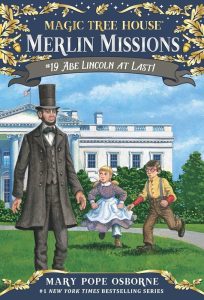
Magic Tree House Merlin Missions: Abe Lincoln at Last! by Mary Pope Osbourne
While trying to get a special feather that will help save Merlin’s baby penguin, the magic tree house whisks Jack and Annie back to Washington, D.C., in 1861 where they meet Abraham Lincoln himself! But all is not well as the new president is busy, desperately trying to save a nation in crisis.
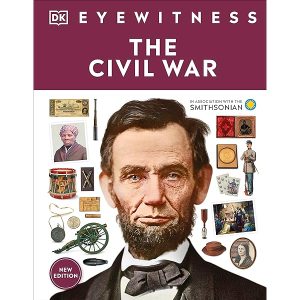
The Civil War by John Stanchak
Take a trip through time and witness the deadliest war in US history. With the help of expert historians, find out how the fight to end slavery sparked the war, see the weapons used by soldiers on the battlefields, and meet the people who risked their lives on the front lines.
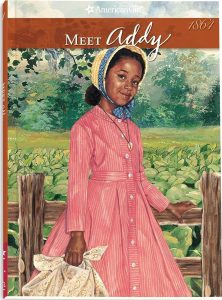
Meet Addy: an American girl by Connie Porter
Nine-year-old Addy Walker escapes from a cruel life of slavery to freedom during the Civil War.
[/bs_citem]
[/bs_collapse]


